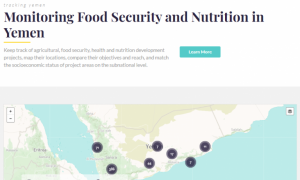Search
The Russian invasion of Ukraine threatens to further exacerbate the food insecurity emergency in Yemen
The Russia-Ukraine conflict has roiled agricultural markets, particularly the wheat market, which has seen prices rise by 30% since Russia invaded on February 24.
The Yemen conflict, underway since early 2015, has led to an ongoing, unprecedented humanitarian emergency.
Fragility, Conflict, and Migration addresses challenges to livelihood, food, and climate security faced by some of the most vulnerable populations worldwide.
The Russia-Ukraine war: Implications for global and regional food security and potential policy responses
View the full text here: https://authors.elsevier.com/a/1gaTJ7sxZ%7EFqVu
Even before the COVID-19 pandemic battered economies across the world, Yemen had already experienced a half decade of civil war, resulting in a loss of approximately 45 percent of its real GDP by the end of 2019, according to the Yemeni Ministry o
Refugees and conflict-affected people: Integrating displaced communities into food systems
Humanitarian interventions that have the greatest likelihood of success involve investing in local agrifood systems and including conflict-affected people in strategies for building, reviving, or strengthening these systems.
This evaluation of Yemen’s Cash for Nutrition intervention, a cash transfer program combined with nutritional trainings implemented by the Yemen Social Fund for Development (YSF), examines the program’s impacts on child nutrition indicators and re
Hunger and acute child malnutrition are increasingly concentrated in fragile countries and civil conflict zones. According to the United Nations, Yemen’s civil war has caused the world’s worst humanitarian crisis in recent history.
MAP Yemen
MAP Yemen is a monitoring tool that keeps track of agriculture, nutrition, and rural development projects in Yemen and their socio-economic context.
Extreme weather events such as floods and droughts can have devastating consequences for individual well being and economic development, in particular in poor societies with limited availability of coping mechanisms.
Costing alternative transfer modalities
Four case studies: Somalia, Egypt, Sudan, and Yemen
Discussions regarding the merits of cash and food transfers by academics and implementers alike focus on their relative impacts. Much less is known about their relative costs.
Building resilience to conflict through food security policies and programs: Evidence from four case studies
Food insecurity at the national and household level not only is a consequence of conflict but can also cause and drive conflicts.

